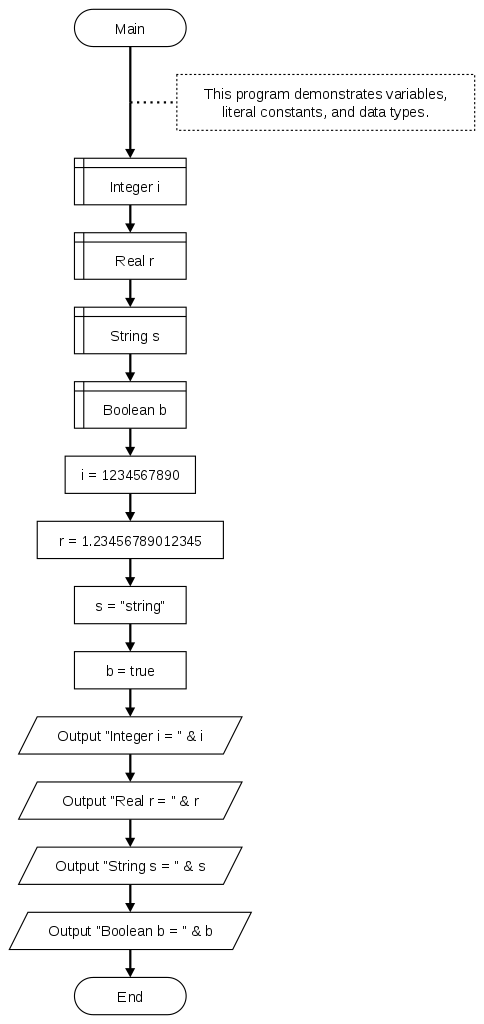2.7: Data Types
- Page ID
- 10622
Overview
A data type is a classification of data which tells the compiler or interpreter how the programmer intends to use the data. Most programming languages support various types of data, including integer, real, character or string, and Boolean.[1]
Discussion
Our interactions (inputs and outputs) with a program are treated in many languages as a stream of bytes. These bytes represent data that can be interpreted as representing values that we understand. Additionally, within a program, we process this data in various ways such as adding them up or sorting them. This data comes in different forms. Examples include:
- your name – a string of characters
- your age – usually an integer
- the amount of money in your pocket – usually a value measured in dollars and cents (something with a fractional part)
A major part of understanding how to design and code programs is centered in understanding the types of data that we want to manipulate and how to manipulate that data.
Common data types include:
| Data Type | Represents | Examples |
|---|---|---|
| integer | whole numbers | -5, 0, 123 |
| floating point (real) | fractional numbers | -87.5, 0.0, 3.14159 |
| string | A sequence of characters | "Hello world!" |
| Boolean | logical true or false | true, false |
| nothing | no data | null |
The common data types usually exist in most programming languages and act or behave similarly from language to language. Additional complex and/or composite data types may exist and vary from language to language.
Pseudocode
Function Main
... This program demonstrates variables, literal constants, and data types.
Declare Integer i
Declare Real r
Declare String s
Declare Boolean b
Assign i = 1234567890
Assign r = 1.23456789012345
Assign s = "string"
Assign b = true
Output "Integer i = " & i
Output "Real r = " & r
Output "String s = " & s
Output "Boolean b = " & b
End
Output
Integer i = 1234567890 Real r = 1.23456789012345 String s = string Boolean b = true
Flowchart

Key Terms
- Boolean
- A data type representing logical true or false.
- data type
- Defines a set of values and a set of operations that can be applied on those values.
- floating point
- A data type representing numbers with fractional parts.
- integer
- A data type representing whole numbers.
- string
- A data type representing a sequence of characters.
References
- cnx.org: Programming Fundamentals – A Modular Structured Approach using C++
- Flowgorithm – Flowchart Programming Language
-
Wikipedia: Data type
↵

